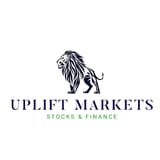Robinhood's S&P 500 Snub: Why Trade Desk's Inclusion Signals a Market Shift
Robinhood's streak of missing S&P 500 inclusion continues, while programmatic advertising leader The Trade Desk secures its coveted spot. This highlights diverging paths for growth and stability in the evolving market.

Robinhood's S&P 500 Snub: Why Trade Desk's Inclusion Signals a Market Shift
Robinhood's streak of missing S&P 500 inclusion continues, while programmatic advertising leader The Trade Desk secures its coveted spot. This highlights diverging paths for growth and stability in the evolving market.
Analysis: A Tale of Two Companies
Robinhood's repeated exclusion from the prestigious S&P 500 index underscores persistent concerns regarding its profitability, regulatory challenges, and the inherent volatility of its transaction-based revenue model. Despite a significant user base, the company has struggled to demonstrate consistent, GAAP-compliant profitability and operational stability required by the index committee. Its business model, heavily reliant on Payment for Order Flow (PFOF), remains under scrutiny, contributing to its elusive S&P 500 entry.
In stark contrast, The Trade Desk's impending inclusion reflects its robust financial performance, leadership in the burgeoning programmatic advertising sector, and a proven track record of sustainable growth. The company consistently meets the S&P 500's stringent criteria, including positive aggregate earnings over the past four quarters and a strong market capitalization. Its diversified revenue streams and critical role in the digital advertising ecosystem position it as a stable and growing entity, appealing to the index committee's long-term view.
This dual announcement sends a clear market signal: while disruptive innovation is valued, the S&P 500 prioritizes consistent profitability, sound governance, and a reliable business model. For investors, Trade Desk's inclusion offers increased visibility and potential for passive investment flow, whereas Robinhood's absence may continue to deter broader institutional adoption despite its retail popularity.
Key Takeaways
- Robinhood's S&P 500 exclusion highlights ongoing profitability and regulatory challenges.
- The Trade Desk's inclusion validates its strong financial performance and leadership in programmatic advertising.
- The S&P 500 committee prioritizes consistent profitability and stable business models for index membership.
- Trade Desk will likely benefit from increased institutional investment due to its S&P 500 status.
FAQs
Q: Why did Robinhood miss out on the S&P 500 again?
A: Robinhood likely missed inclusion due to concerns over consistent profitability under Generally Accepted Accounting Principles (GAAP), ongoing regulatory scrutiny, and the volatility inherent in its revenue model, which is heavily tied to trading volumes and payment for order flow.
Q: What does The Trade Desk's S&P 500 inclusion mean for the company?
A: The Trade Desk's inclusion means increased visibility, prestige, and liquidity. It will be added to numerous index funds and ETFs that track the S&P 500, leading to significant passive buying of its stock and potentially a boost in its valuation and investor confidence.
Q: How does a company qualify for the S&P 500 index?
A: To qualify for the S&P 500, a company must meet criteria including a market capitalization of at least $14.6 billion, sufficient liquidity, a public float of at least 10% of its shares, and positive reported earnings in the most recent quarter and over the previous four consecutive quarters in aggregate.
Call to Action: Stay informed on market trends and company performance by subscribing to our financial insights newsletter today!

